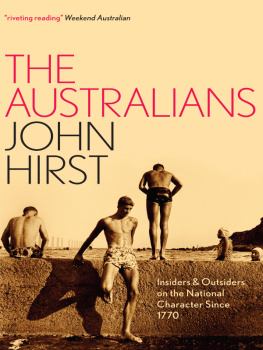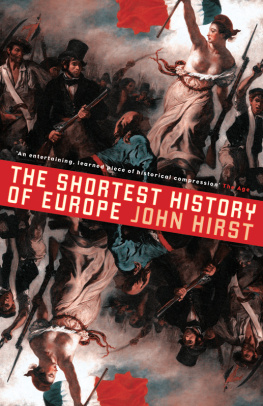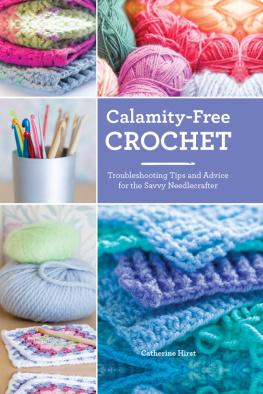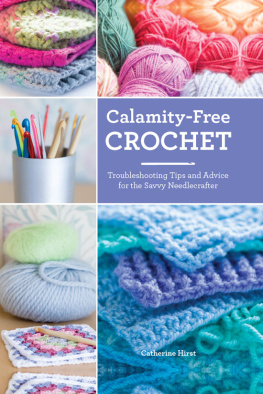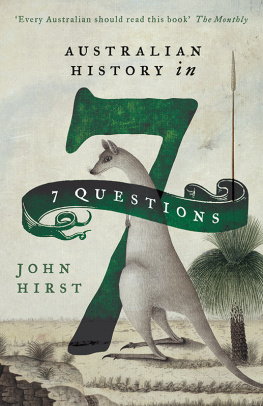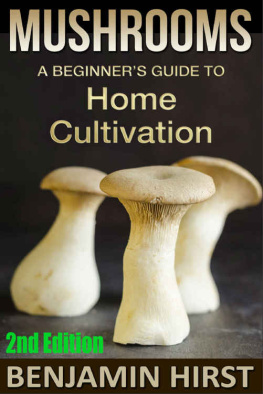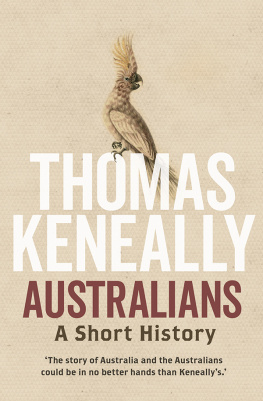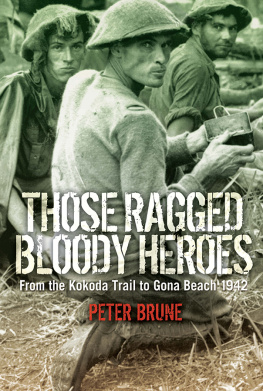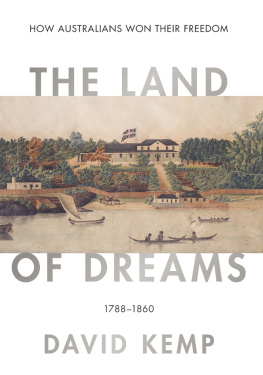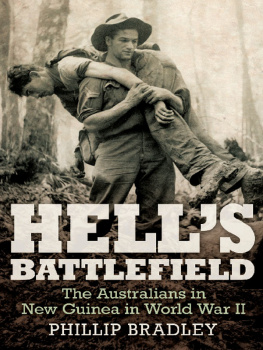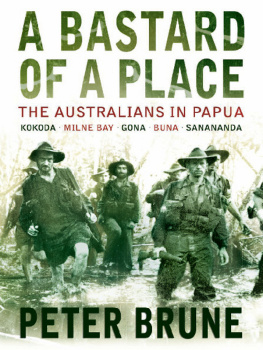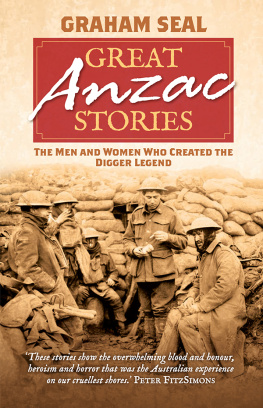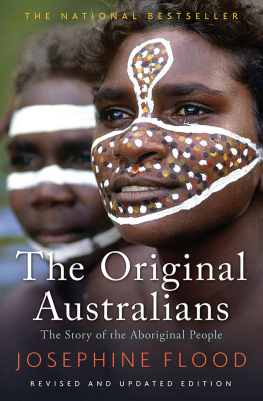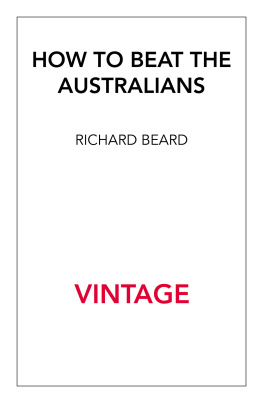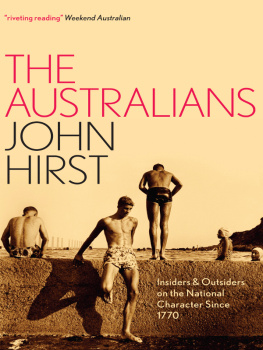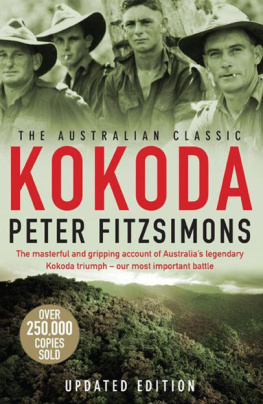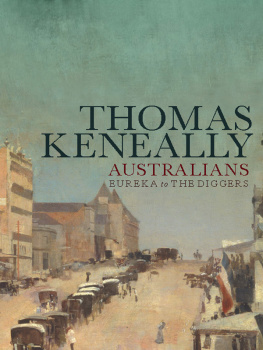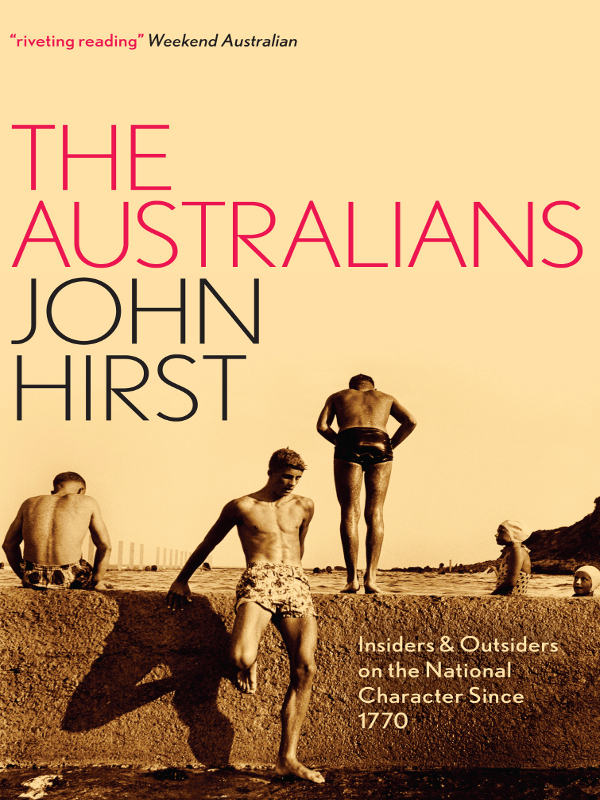
The Australians
The Australians

INSIDERS & OUTSIDERS ON
THE NATIONAL CHARACTER
SINCE 1770
John HIRST

Published by Black Inc.,
an imprint of Schwartz Media Pty Ltd
3739 Langridge Street
Collingwood Vic 3066 Australia
email: enquiries@blackincbooks.com
http://www.blackincbooks.com
First edition: Document collection National Australia Day Council, 2007 Section introductions John Hirst, 2007
Second edition: Document collection National Australia Day Council, 2007 Section introductions John Hirst, 2010
The National Australia Day Council is generously supported by the Australian Government through the Department of Prime Minister and Cabinet. The document collection contained in this publication was supported by the Australian Government through the Quality Outcomes Programme administered by the Department of Education, Science and Training.
ALL RIGHTS RESERVED.
No part of this publication may be reproduced, stored in a retrieval system, or transmitted in any form by any means electronic, mechanical, photocopying, recording or otherwise without the prior consent of the publishers.
Every effort has been made to contact the copyright holders of material in this book. However, where an omission has occurred, the publisher will gladly include acknowledgement in any future edition.
e-ISBN: 9781921870170
Book design: Thomas Deverall
Contents
The Australian Constitution on which our federation is founded begins with the simple words Whereas the people have agreed to unite. Nothing could more elegantly capture the idea that the Australian people make the Australian nation.
Every year on Australia Day we celebrate this fact. But the people we are now are different from those that forged those words over a hundred years ago. Or are we? Just who are the Australians? In 2006 the National Australia Day Council commissioned Dr John Hirst, one of our most eminent historians, to explore the question, to examine the nature and the roots of the national character so we might better understand the people we have become. This book is the fruit of his labour.
It offers a diverse range of voices from inside and outside Australia, voices from the past and present that demonstrate how our history remains with us in profound and often unexpected ways. The themes around which the discussion is structured reflect key aspects of our shared collective history as well as the varieties of our experience as Australians. Together they highlight the paradox of a particular identity that is constantly changing.
Dr Hirst has drawn together a fascinating chorus of voices dating from 1770, ranging from the first insightful observations of the Australians from one of the first outsiders, Captain James Cook, to powerful commentary from one of the newest insider Australians in 2006. I am confident these voices will both confirm much of what we believe to be true about us and also challenge many of our ideas about how we became who we are. There may be no simple answer to the question of Who are the Australians? but Dr Hirsts collection will certainly stimulate considerable discussion of what makes the Australian identity unique.
In understanding our history each of us can make a contribution to build Australia and our national character in the years ahead. Each Australia Day we invite all Australians to acknowledge the past, rejoice in our achievements and look confidently to the future. We look to the past to learn from our successes and our mistakes. While we have inherited a history that powerfully shapes us all, tomorrows history is ours for the making.
Warren Pearson
National Director
National Australia Day Council
This book collects what outsiders have said about Australians and Australian characteristics and what Australians have said about themselves. In some quarters this will be regarded as an unfashionable book because it believes that there is such a thing as an Australian national character.
In 2002 many Australians were killed and injured in the terrorist attack in Bali. At the local hospital there was a shortage of every thing the doctors needed, including pain-killers. Graeme Southwick, the Australian doctor who took charge of the Australian ward, asked patients to assess their own pain level. Time and again the patients said they were alright; they told him to give the drugs to the person next to them who was suffering more.
This account awoke a memory in me. I turned to Charles Beans Official History of the Gallipoli campaign to check it. The first wounded taken off the peninsula endured terrible conditions: the preparations had been woeful. But the injured remained cheerful and Bean reports: Yet the men never showed better than in these difficulties. The lightly hurt were full of thought for the severely wounded.
Another Australian doctor in Bali praised the volunteers in the hospital. David Marsh said, I think it is what Aussies do. There were well over a hundred there, all Aussies, fanning patients because there was no air-conditioning, standing all day holding up drips because there were no drip stands.
That brought to mind the makeshift hospitals of Weary Dunlop on the Burma railway. The Australian captives of the Japanese acted differently from the English, the Dutch and the Americans. Gavan Daws in his book Prisoners of the Japanese concluded, The Australians kept trying to construct little male-bonded welfare states.
Of the rescue effort at the Bali nightclubs, Neil Williams of the Forbes Rugby Club reported, It was fantastic. Good old Aussie spirit. We had fellas manning the fire engines. We had fellas running in pulling people out dead and alive. Everyone stepped right up. It was tremendous.
At their baptism into the new era of terrorism the qualities that Australians valued were stoicism, making no fuss, pitching in, making do, helping each other. These characteristics were identified and valued as Australian a long time ago, when we were British and our national symbol was a bushman. There has been a long campaign claiming that in a changed world and in a changed Australia, the values and symbols of old Australia are exclusive, oppressive and irrelevant. The campaign does not appear to have succeeded.
There is an absurdity in telling a people to drop their old values and symbols, for these are the things that have made them a people. And yet a people need to change. Those who want change do well to let it flow out of tradition. Otherwise, in the words of Bernhard Philberth, a perverted traditionalism and a misguided progressivism propel each other to a deadly excess.
We have had examples of both tendencies in Australia in recent years. This book is designed to do good service to the nation by tracing both tradition and change in the Australian character. There are old voices and new. There is celebration and criticism.
Outsiders and insiders have had different perspectives on Australia, and Australians have had to deal one way or another with what outsiders particularly the British have said about them. There is also a difference between what Australians think of themselves and what they are really like. Australians, like other peoples, tend to think they are highly distinctive, but the characteristics they value may be an extension or an exaggeration of what they brought from the mother country. In some respects they may be more like the peoples of other new lands settled by the British than they are willing to acknowledge. I have been aware of these complexities as I have chosen the extracts; in fact I have chosen them in order that the complexities might be highlighted. I have not of course resolved the complexities, but there is plenty for the reader to ponder.
Next page
